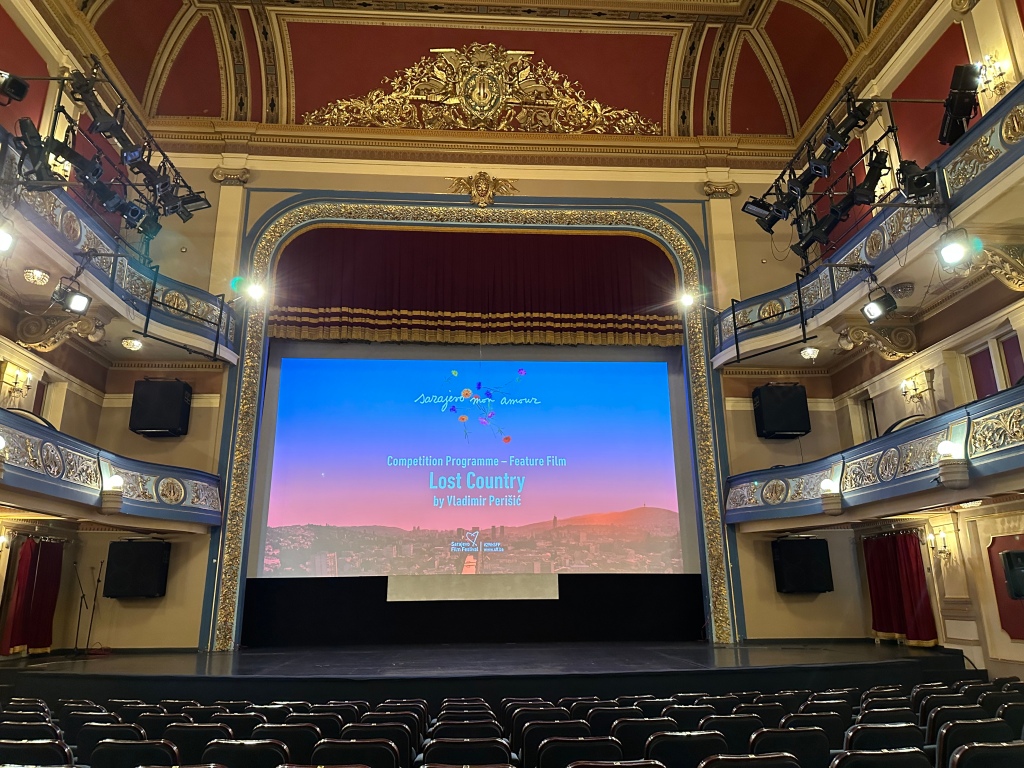Introduction: Hi Everyone! I am currently sitting on the plane back from Sarajevo to San Francisco writing the beginning of this piece after spending the past month in Sarajevo as well as two months overall abroad. This month came with many highs and lows but overall it was a really awesome experience and Sarajevo is a place I will definitely be going back to in the future. Compared to Belgrade, the month in Sarajevo felt much faster and was also quite a bit busier (maybe that was due to our proximity with our lodging to so many tourist attractions and hiking spots). While in Sarajevo I also got to compare (from Serbia) their views of the war as well as how their health system operates (spoiler alert, it’s super complex). In this post, I will dive in to my experience as well as how it varied from my time in Belgrade. I will also talk about my overall experience studying abroad and why I think that it was such a worthwhile experience to visit somewhere a bit off the beaten path. So let’s get right into it!
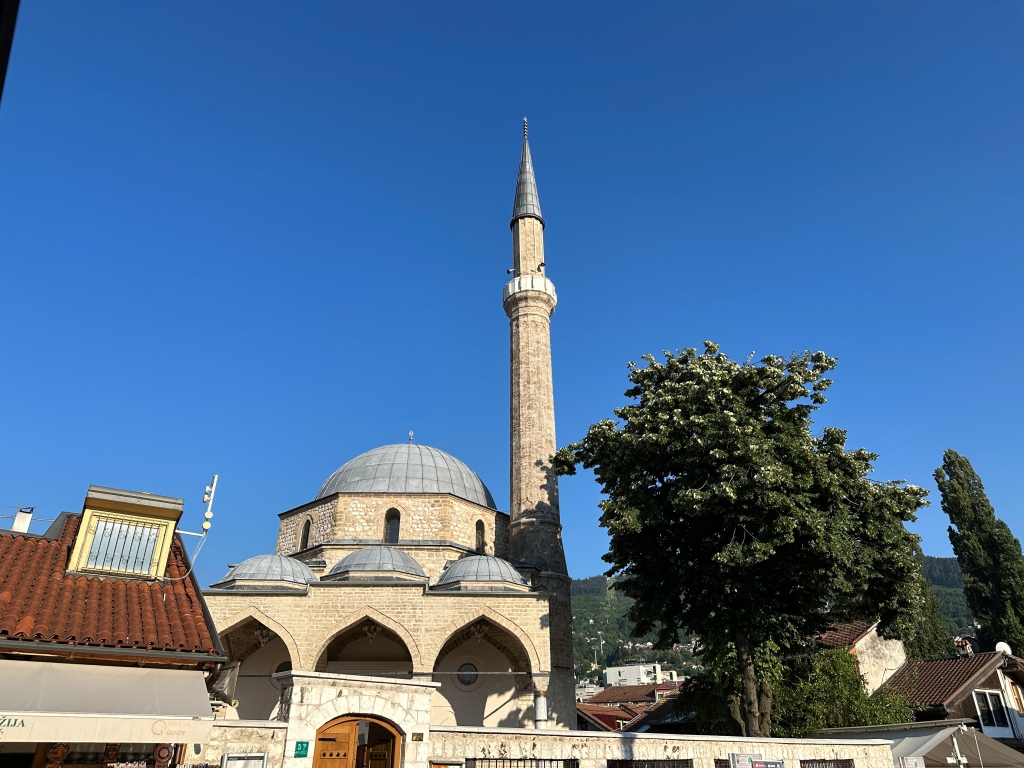
Background: Sarajevo is the biggest city in Bosnia-Herzegovina and is also the capital. Bosnia-Herzegovina currently has about 3 to 3.5 million people although they have not done a census recently and the fear is that their population is a lot lower than this due to brain drain (young, college educated talent leaving the country for places where they can get more money) and also a rapidly aging population. Sarajevo is situated in a valley surrounded by mountains (with amazing amazing hiking) which means that in the winter, the air quality gets really bad due to pollution staying down in the valley. This pollution is also caused in no small part by home owners burning coal and other pollutants to heat their homes instead of paying the government for heating. Part of the complexity of Bosnia-Herzegovina is that, as a result of the the war in the 90’s and the Dayton Peace Agreement, it is broken up into three separate administrative regions, The Federation of Bosnia-Herzegovina, The Republika Srpska (Serbian majority) and a small piece of territory in the North near the Croatian and Serbian border called the Brcko District. Sarajevo is situated in the Federation of Bosnia and Herzegovina but is surrounded on basically all sides by the Republika Srpska. Each of these regions has their own government of sorts, leading to lots of administrative problems getting things done. Add three different presidents to this equation and it makes things super complicated. There are no borders between the regions, but there is a clear difference as when you enter into the Republika Srpska as you immediately began seeing Serbian flags as well as Cyrillic written on the street signs. Furthermore, each region teaches a drastically different curriculum in schools due to nationalism, leading to tensions. Based on many stories I heard while in the region, many people are seeing a lot of hatred between younger generations due to ethnicity which could lead to conflicts down the road. This is super sad because this region has already seen so much conflict.
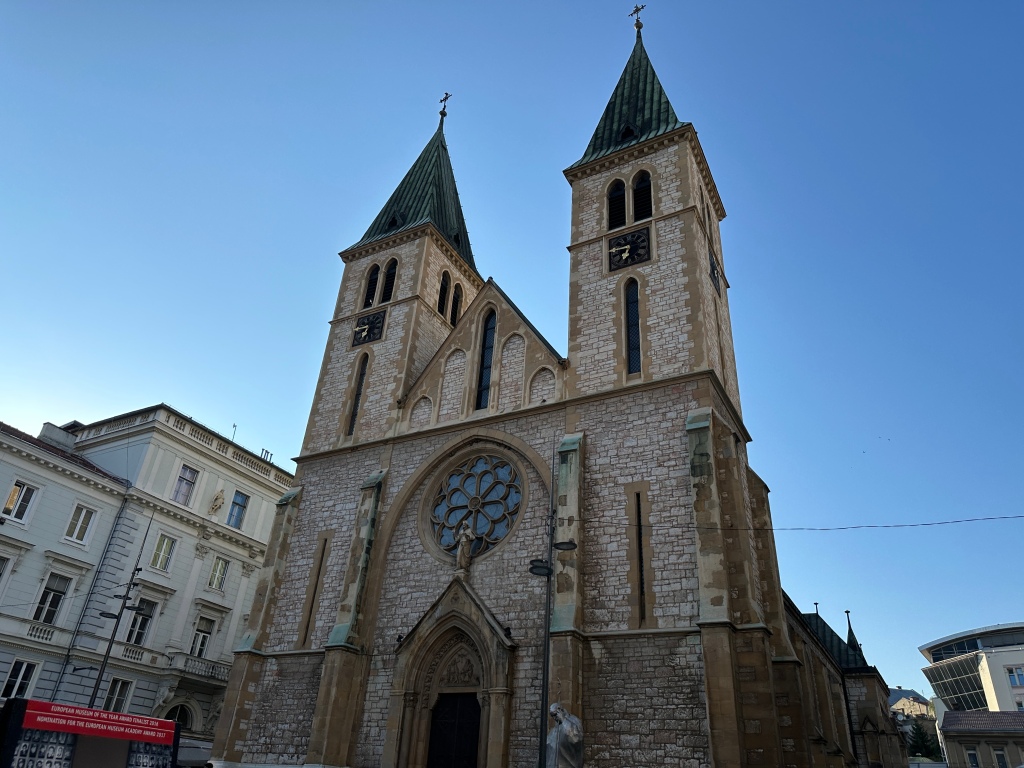
Lodging and Old Town: While in Sarajevo, we stayed at the Hotel Sahat right in the heart of Old Town Sarajevo, which is a huge tourist hot spot due to its Ottoman history. Our hotel was actually directly across from the spot where Archduke Franz Ferdinand was shot. The shooter then fell of of Latin Bridge into the river and this shooting started World War I which is pretty crazy to think about. Old Town (better known as Baščaršija to locals) is essentially a huge open air market, with shops selling trinkets, restaurants, museums, and plenty of ice cream (trust me, there is not a spot in the Old Town where you cannot see a ice cream stand and its super cheap too. I had a little cone practically every night). The main food options in Baščaršija are street food with dishes including: cevapi (a traditional balkan style sausage dish served with bread, onions, and cream), chicken kebabs, Burgers, Goulash, and Bosnian Coffee as well as Tea. Baščaršija is practically all Halal and has many of the cities Mosques as well because Sarajevo has a majority Muslim population. There are a few bars spread out in Old Town too but there are mostly lined up in one street so as to respect the customs and traditions. Trust me, we still found a really good place to get an evening cocktail right across from our hotel (and you can too), called La Cava. We even got to know the bartenders because we were there practically every night 😂. The perks of being in Baščaršija are: it is really close to a lot of museums, there are plentiful and cheap food options, there is plenty of shopping, and there are a few hiking trails. One of the main drawbacks of being in this area is that after more than a week, the food options get a bit boring so you have to begin to walk a bit farther to get lunch and dinner. The other main downside of this location is that it is a bit far from the University of Sarajevo main campus (about a 40 minute walk) as well as a gym, but I think the pros of being in such a busy location for sure outweigh the long walk. Also, there is plenty of public transportation nearby making it easy to get to the malls, University, and gym (although it is not free like Serbia sadly and we were advised to always pay so that we did not get in trouble with local authorities).
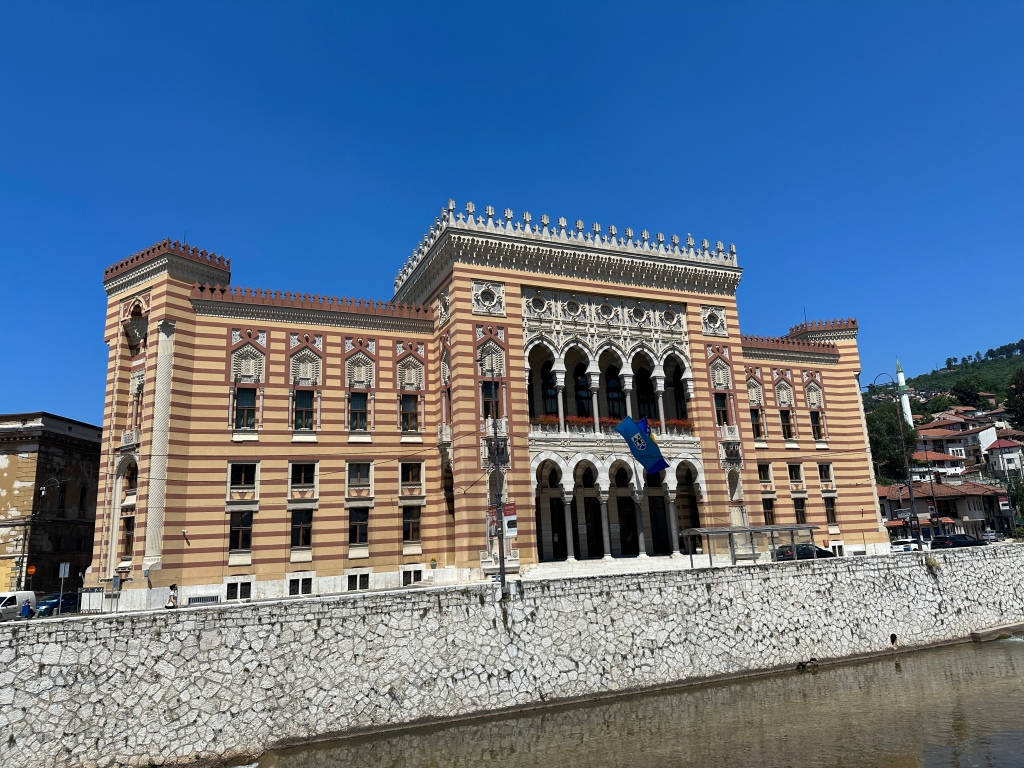
School Experience: While in Sarajevo, we were there to learn and be immersed in the culture, and this program definitely allowed us to achieve this goal. Again, our professors were organized through Northwestern University and we had two weeks of Language, Culture, and History and two weeks of Public Health. As said above The University of Sarajevo, where most of our classes were held, is about a forty minute walk from Old Town right by the US Embassy and also a few of the cities malls (and a supermarket like Whole Foods) with many great food options. Although we had the majority of classes in this building, we also had many field visits and day trips, especially during the second two weeks which allowed us to see a lot of the city as well as other parts of Bosnia.

The language and history part of the course focused the majority of time on the Siege of Sarajevo that occurred in the mid 1990’s as well as the atrocities that occurred during that time, especially with Genocide occurring in Srebrenica, a town about 3 hours drive from Sarajevo we visited. While learning about this tragic history, we had a couple in class lectures but also many site visits, including to the Tunnel of Hope, War Childhood Museum and Srebrenica. The Tunnel of Hope is right outside Sarajevo and focuses on showcasing the underground tunnel that was used to transport goods when the city was under siege. The War Childhood Museum is a fascinating but tragic look into what war is like for children, through collected personal stories as well as personal items. Finally, visiting Srebrenica was a very eye opening and sad experience. Being in the exact location where genocide occurred not too long ago as well as hearing a personal story of a harrowing escape (a 19 year old boy at the time, now a bit older, escaped through the forest over 6 days to the North through enemy fire but lost his whole family while running), made me realize that life is short and that we have to enjoy every moment. It also made me realize that we need to listen and acknowledge peoples experiences because we never know what people have gone through. Learning about the history from this perspective and seeing all the tragedy that occurred was a very different picture than what we were painting in Serbia. While in Serbia, we focused on learning about the US NATO bombing campaign as well as how the Serbians had to survive that. We also learned a lot about the politics of the 1990’s, especially regarding Slobodan Milošević. There was never any mention of genocide that occurred in Bosnia or of any war crimes that occurred which is fascinating and showcases the strong nationalistic sentiment. Also, while in Srebrenica we learned that there are still genocide deniers and also people in Srebrenica who continue to act like nothing happen and live their daily lives. I think if we had gone to Sarajevo before going to Belgrade, I would have had a much more jaded image of Belgrade. Our Northwestern professor told us that after his first visit to Serbia, it took him a long time to even began to form a relationship with people out of his pure hatred and I would agree with this sentiment. Luckily, out of my own ignorance, it worked well to go to Belgrade first so we could see that without the full context and hopefully enjoy. It was truly fascinating to learn about the tragedy from the Bosnia perspective while also seeing that we did not hear anything about that in Serbia.
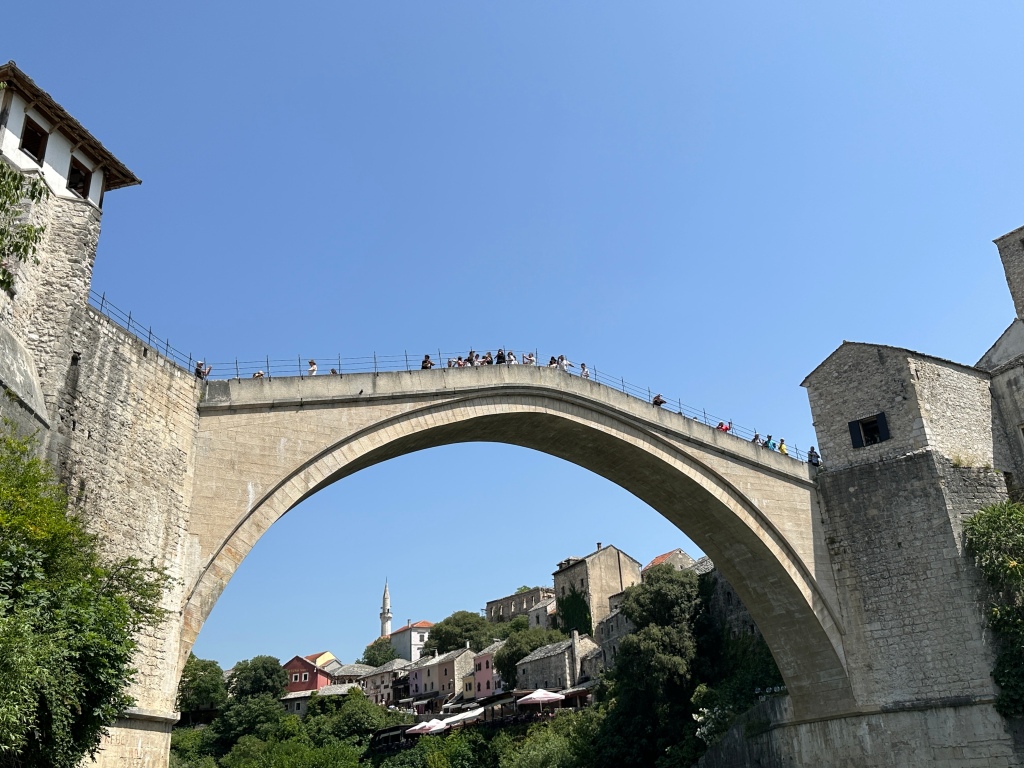
In terms of the second two weeks of this part of the program the classes focused on Public and Mental Health in the region, similar to the schedule we had in Serbia. During these weeks, we had a guest lecturers teach us about Veterinary health and how that can impact human health as well as a guest lecturer from a dermatologist. We also had visits to UNICEF, a center for treated alcoholics, an alcoholics meeting similar to AA (alcoholics Anonymous), a primary care facility, a healthy aging facility, and an NGO focusing on Mental Health called Wings of Hope (we visited this for three days). These experiences and lectures were very valuable and gave us some valuable insight into the process of what the healthcare system is like in Bosnia-Herzegovina. Specifically we got to see how organizations operate and what their funding is like. Furthermore, a lot of these field visits did not have a lecture portion per say meaning that we got to truly focus on the real world experiences we were having. One of the drawbacks of these last two weeks of the program were that they were ethically a bit challenging. Specifically, it seemed as if at times we lacked consent to be there or did not have the proper confidentiality warnings regarding what we were seeing and hearing. Also, it seemed like a lot of the spaces we were visiting were not meant for groups, meaning that we were taking away resources from people who need it and also overcrowding the spaces. Upon seeing this concern, we brought it up with our program director who proceeded to say we had the proper consent, even if it felt a bit strange at times.
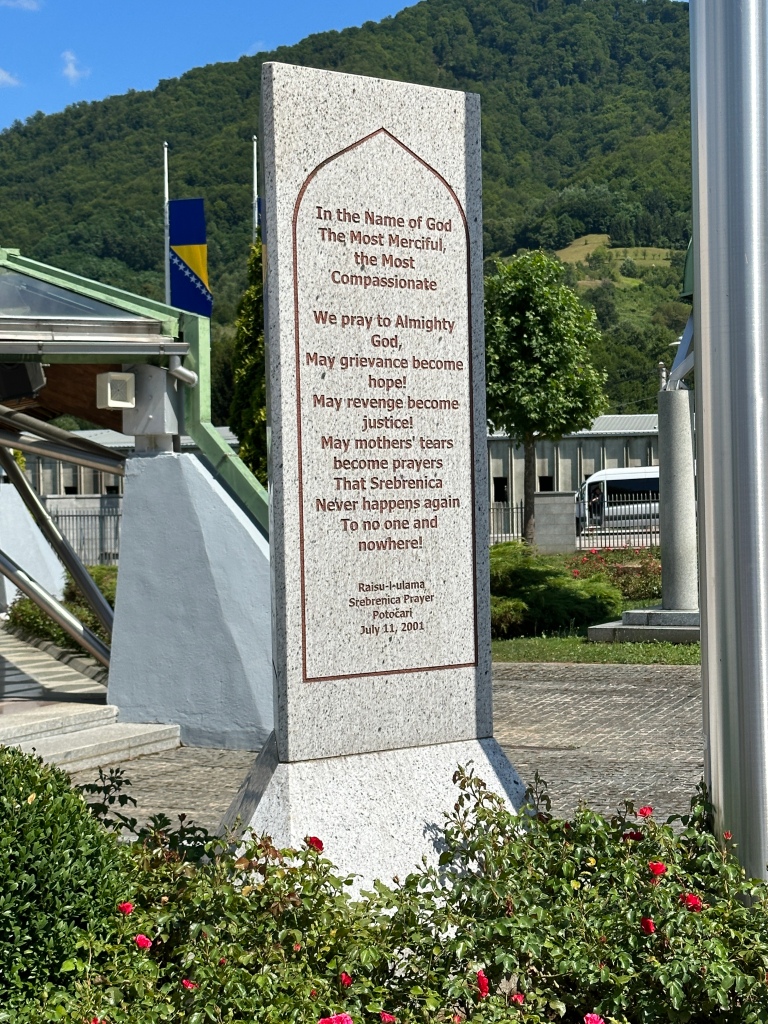
Overall my favorite experience we had during these two weeks was visiting the health aging facility as it was nice to see what other countries are doing regarding aging and health. This is a center where people can visit daily to socialize with others but they do not live there. While there, we got to participate in a daily morning yoga exercise class and also got to tour the facility. We also were able to chat with some of the participants and even got to buy some of the art that the people who engage with the center produce (and these people do not have any formal artistic training). It was a very wholesome experience and showed me that aging does not have to be a big burden if approached properly and in an active way.
Activities and Museums we visited while in Sarajevo:
Lukomir Village Hike: All of the terrain in Bosnia is stunning so we decided to take advantage by doing numerous hikes. Quick upfront warning: landmines are still present in about 2% of the land in Bosnia due to the war and the majority are in remote areas, meaning that any hike you do in the region has to be with a guide who knows the area and route. Two companies we used for our hikes were: Funky Tours and Insider Sarajevo. Both companies are located in Old Town Sarajevo and I highly recommend both of them for expertly guided tours. Anyways, Lukomir is a nomadic village located in the mountains of Bosnia. It is about an hour drive away from Sarajevo to the trail head and then about a 2-2.5 hour hike somewhat uphill and rocky but with stunning views to the village. Once we were at the village, we got to shop for local goods (I bought some fresh jam) and even got to enjoy a lunch of potato pie, fresh juice, salad, and Bosnian coffee. This hike was incredible with great views and great hospitality and was about an 7.5/10 difficulty level.
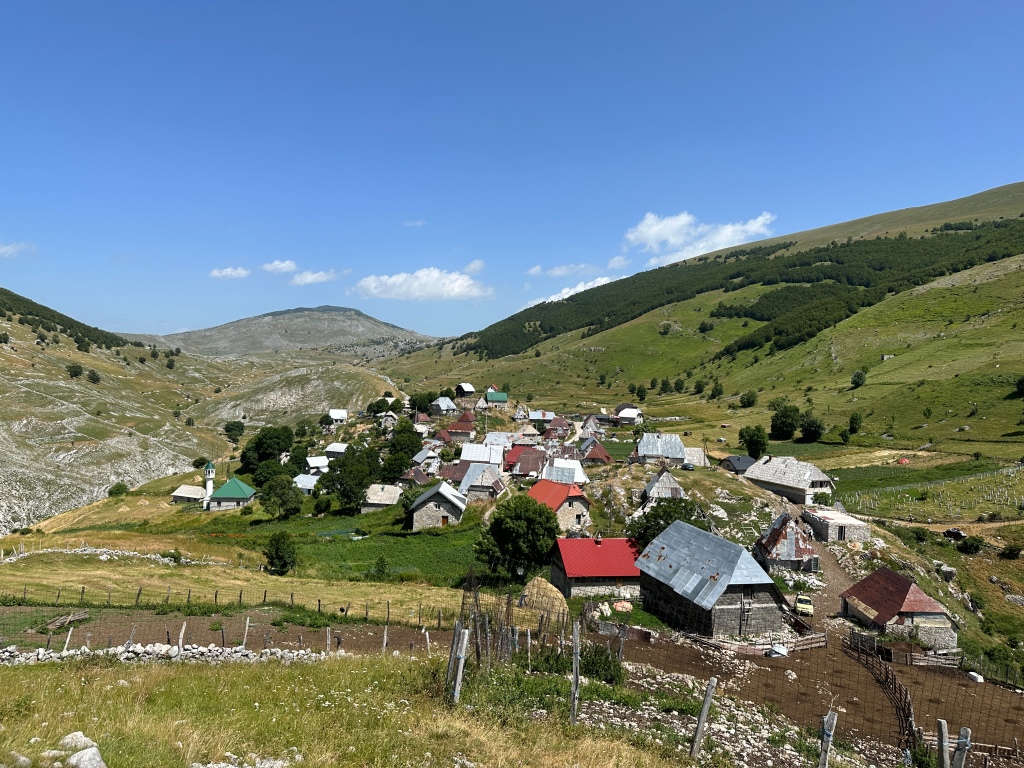
Sutjeska National Park and Trnovacko lake: This was the second hike we did while in the region and was more of an all day commitment. This national park is the oldest in Bosnia and was also a World War II battle site. It is about a two hour drive from Sarajevo to the entrance of the national park followed by a one hour drive on a one lane dirt road to the trail head. While in the park, we hiked to Trnovacko lake, a beautiful heart shaped lake. This hike went down, then back up again and the hill leading up to the lake is very rocky and treacherous but very worth it. The views on this hike are stunning and the park is actually called the Yosemite of the Balkans (but way way way less crowded and still very amazing). Also, in the middle of the hike you actually cross into Montenegro which is an interesting country to cross off your list as well (and the border crossing is literally just a sign, no passport required). If you do this tour with Funky Tours, you get a nice picnic lunch at the lake and also get to see the World War II monument on the way out. This was an incredible day and I very much recommend. The hike is stunning and getting to swim in the lake was an awesome way to refresh. Overall difficulty: 8/10
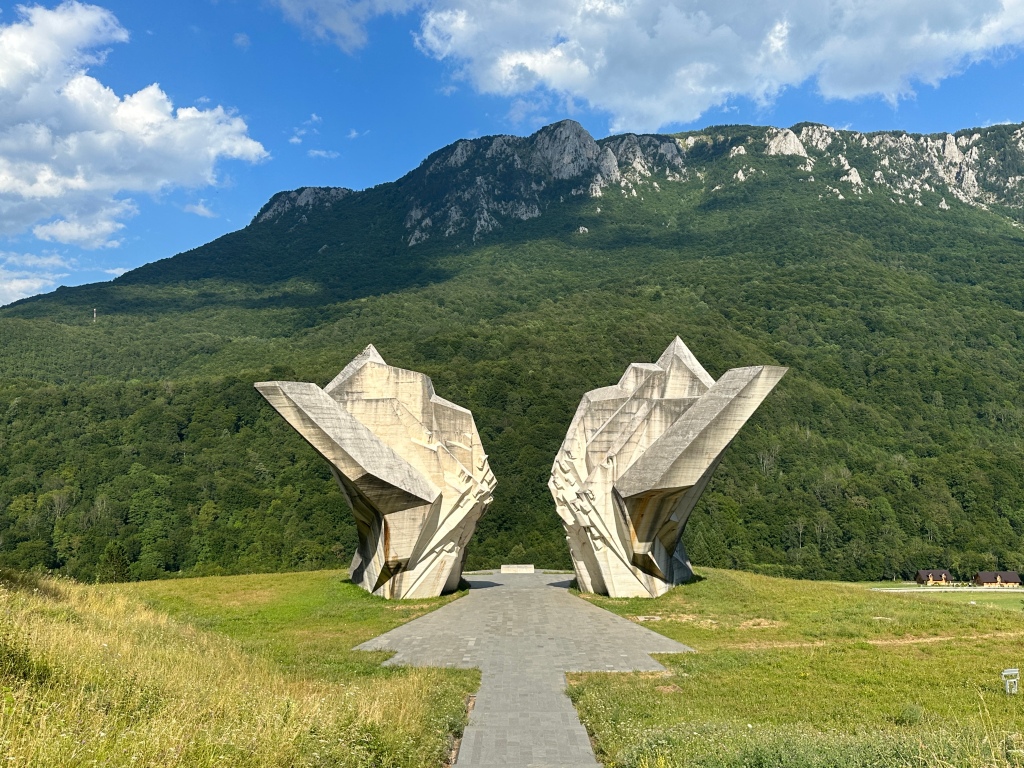
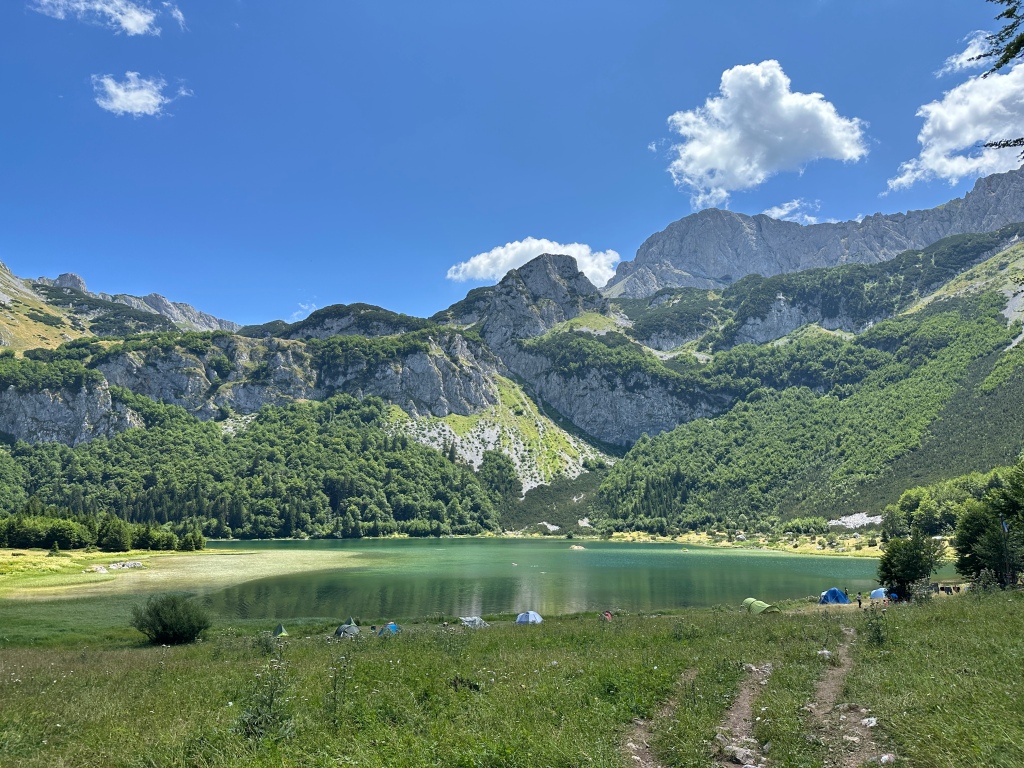
Trebević Mountain: This mountain and hike is at the top of the cable car right in Old Town Sarajevo. For this one, you do not need a guide because it is completely de mined. To get to the trailhead, take the cable car to the top and then follow the signs. You can hike for as long or little as you want (we made it about halfway up to the top of the mountain) and the views are great. I also highly recommend going to see the abandoned bobsled tracks as well. They are from the 1984 Olympics and are now covered with graffiti, making them interesting. Overall difficulty: 6/10
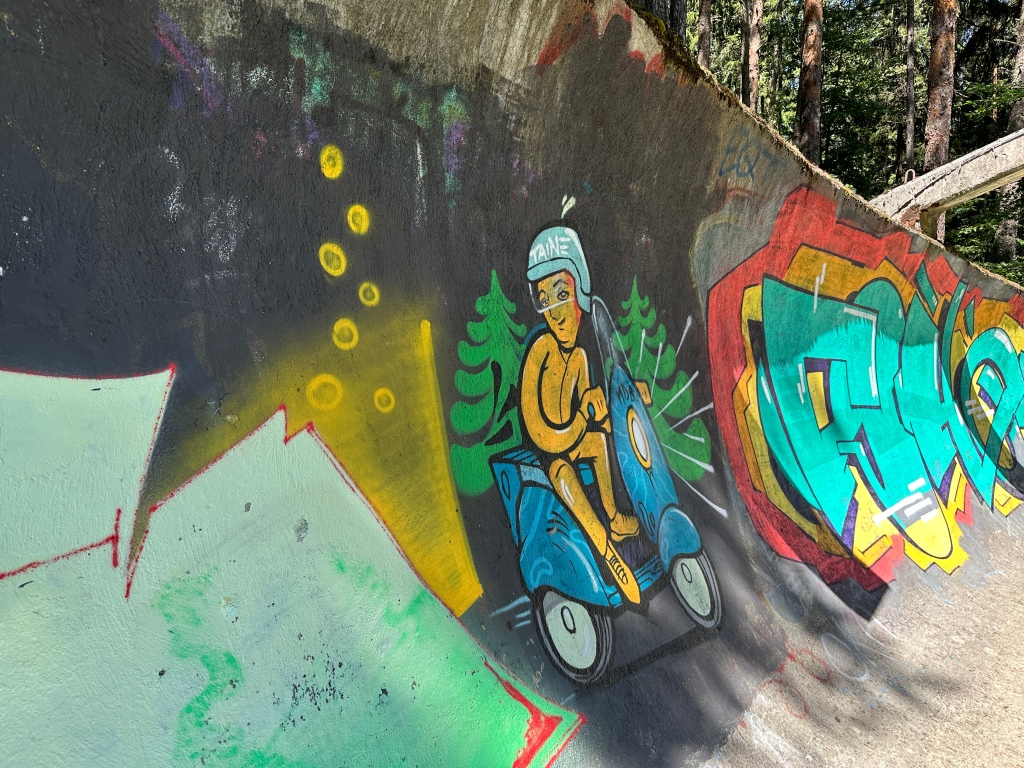
White Water Rafting Down the Neretva river: This river is located about an hour away from Sarajevo and you start your adventure in a small town, Konjic. The river is actually the coldest in the world so upon your arrival, you are suited up with wetsuits, helmets, boots, and life jackets. After that, you drive about thirty minutes to the drop in point and get going down the river. Our guide was great and kept us safe but did not speak much English so he did not give us much safety advice or chat with us. But we really enjoyed the class two rapids (they were just right in terms of intensity) and also getting to swim a little bit down the river. We stopped at various points along the way as well to explore and grab some snacks which was nice. Also, the slot canyons you get to see while rafting are incredible, so enjoy the view. It reminded me very much of the Canyons throughout the Narrows in Zion National Park. The experience is the perfect mix of calm but also thrilling, I very much recommend.
Museums I visited: National Museum of Bosnia-Herzegovina, War Childhood Museum (Recommended), Museum of Crimes Against Humanity and Genocide, Gallery 11/07/95 (recommended), Siege of Sarajevo Museum, and The National Gallery of Bosnia-Herzegovina.
Sarajevo Film Festival: The last weekend we were in Sarajevo, the annual film festival started which is a pretty big deal for them. The city apparently expands in size by 1/3 and this year, they had Bono present on opening night for the new film about the U2 Concert after the siege of Sarajevo. I did not have chance to see that film as it was sold out but I did get a chance to see a Serbian film called Lost Country that dealt with a teenagers struggles during the end of the Milošević regime and how his mother’s connection to politics causes problems. It was quite a sad film but gave us a good depiction of the history we had learned about previously. Overall, it was a fun experience to participate in.
Weekend Trip while in Bosnia: Dubrovnik, Croatia– While in Bosnia, we got a three day weekend from classes and took a trip to Dubrovnik, Croatia. To get there we took a public bus from Sarajevo (it was a 8 hour ish ride). Dubrovnik is a walled city full of lots of history and was also where Game of Thrones was filmed. I think this was my favorite city I visited while I was in Europe. I loved every second of it, even though it was raining as it was the perfect mix of history and culture but also water activities (which I love love love). Getting to swim in the Adriatic was incredible and even better than I could have expected. While there, we walked the city walls, explored the museums in Old Town, visited Lokrum Island (a 10 minute boat ride away), had gelato and seafood, and enjoyed a few different beaches (and some cocktails beachside 🤣). We also did lots of walking to see the various forts and palaces and even took the cable car to the top of the hill to see the view. This trip was incredible and so worth the 16 hours on the bus total to be there for only 48 hours. We also stayed at a very nice family home AirBNB close to old town which was nice because it was outside of where all the tourists were.
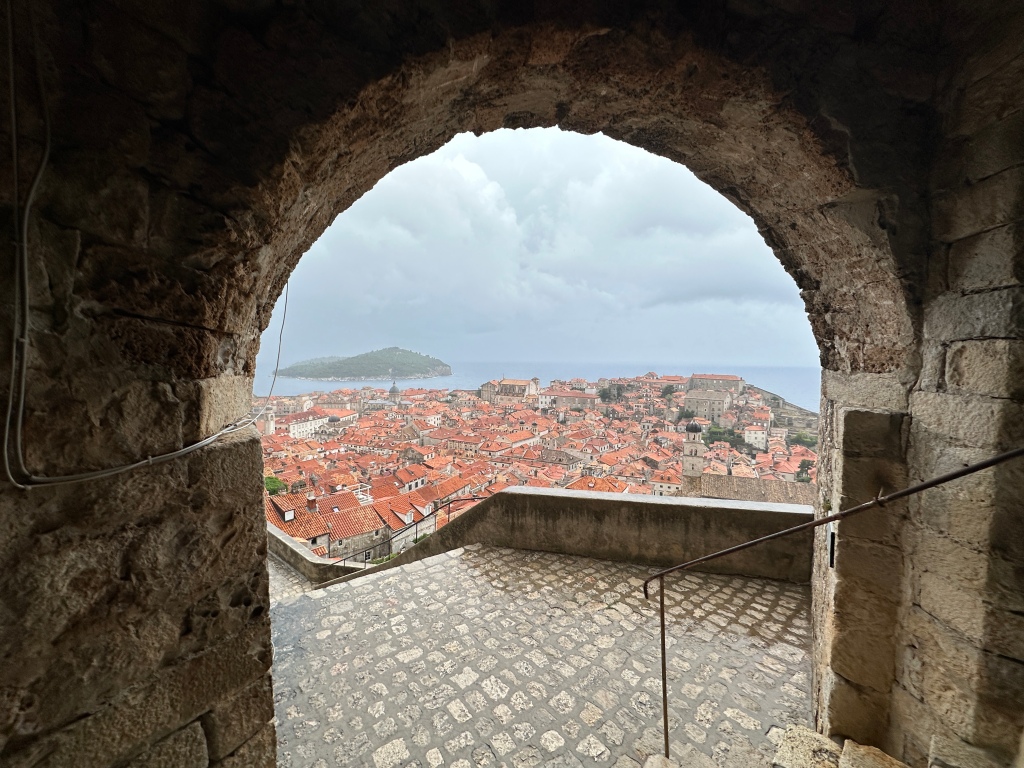
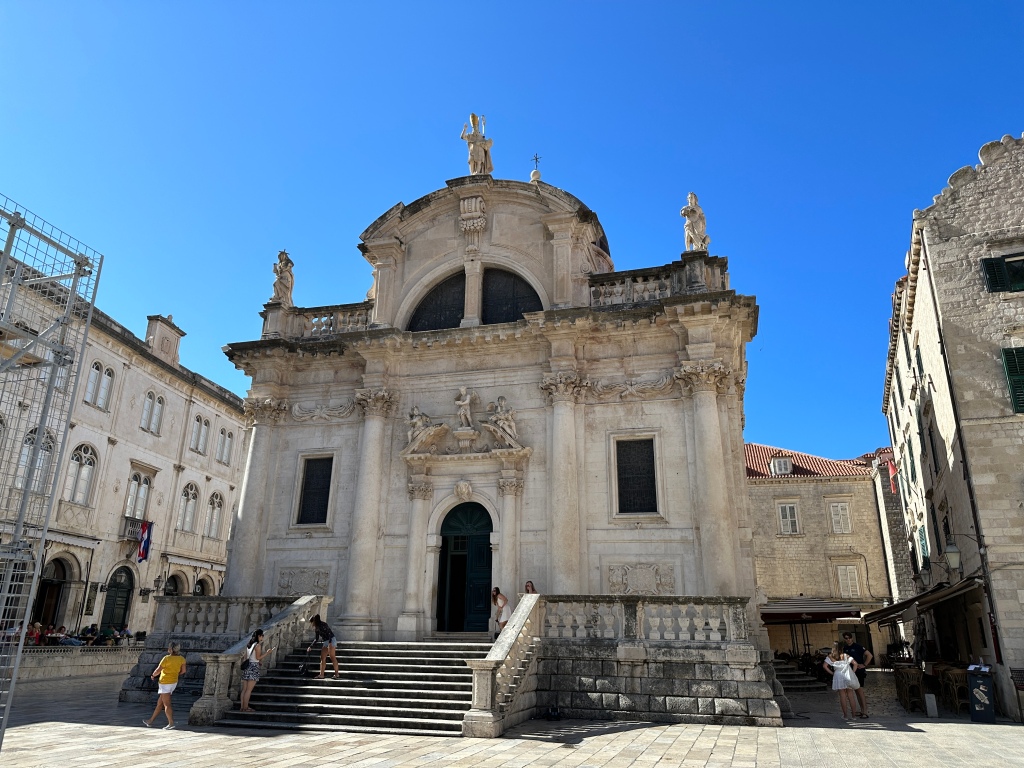
Finally Food In Sarajevo, here are some of our favorite spots: SCC Shopping Center food Court, Restoran Tavola, La Cava (great wine+cocktail bar, we were there every night), Brunch SA, Nanina Kuhinja, Ćevabdžinica Specijal, Ćevabdžinica BEG, Sah Mat Burger, EAT ME, Inat Kuća, Crvena jabuka gastro market Marindvor Food court, Kuća ljudskih prava Sarajevo, Žeks Doner, and of course any ice cream stand!
Ćevabdžinica– means it mostly has Cevapi and other local delicacies
Final Thoughts: Wow. I had an incredible time in Bosnia. Here is what I wrote in my final week reflection to my professor because I think it sums up my experience well.
To say this experience has been powerful and mind blowing is an understatement. I got more out of this program than I ever intended to and it is all thanks to the amazing people who have helped to run this program. Getting to learn the history, language, and culture but also getting to experience it in person through site visits and museums. Getting to explore nature through rafting, hiking, and walking around the old town. And getting to visit many different cities throughout the long weekends and day trips. We have done so much in this time period that it has felt like both a short time and a long time. But I will always remember my experiences here in Sarajevo and definitely plan to come back in the near future with my family to keep exploring, as there are many parts I have not seen yet.

One of the main pieces of information that I will take with me from this trip is the value of forming connections with others. Throughout this trip I have met many incredible people and have been able to hear many stories about people’s lives with their trials and tribulations. What this has done for me is two fold. First off, I have been able to learn about how people live life and experience these traumatic events, in turn allowing me to form my own opinions of the situation. It has also allowed me to get to know the culture better and want to share this region with others. Hearing stories has shown me that this region and its beauty has been very much underappreciated. As a result, I would love to pass on my amazing experience to others in my life in the hopes that I can spread the joy. This region has been through a lot of trauma but also contains so much beauty within that trauma, making it fascinating.
The other piece of information I am taking away from this experience is the power of having experiences versus buying consumer products. With visiting six different countries and also doing a bunch of day trips (and hikes), I have really prioritized experiences and connecting versus buying items. Sure, I have bought some gifts for my family, to showcase the wonderful trip I have had, but the majority of things I have done for myself have been the experiences. This is because during this trip I began to realize that life is very short and at the end of the day, we are going to remember our experiences more years down the road versus what we buy. I also was of the thought process that it is unclear when I will be back to this region (because I have so much of the globe left to explore, I have not even touched Asia yet) which means that I should take advantage of as many experiences and museums as possible.

The third and final thing I will take away from this trip and experience is to do things that make me uncomfortable. Signing up for this program, I was pretty nervous going so far away and visiting a completely new place. Even on the plane going to Serbia, I was still very nervous, especially because I was going to be away from my family for so long. But once I got here and settled in, I realized that this was going to be a once in a lifetime experience and that therefore I should enjoy every moment with no regrets. Furthermore, it made me realize that I should do more things that make me uncomfortable because that is how I grow and also end up having amazing experiences. Overall, I am so thankful for everything this program has done for me and cannot thank everyone enough for the hard work they put into it. The group and experience would not be the same without the people involved in it. It absolutely changed my life and outlook on events. This time will remain an integral part of who I am for years to come.
That is all for this blog post. I hope it was informative and inspired a visit to Bosnia, because I sure am telling everyone I know to go to Bosnia ASAP, it is that worth it to visit.
ChefWalker out! 🫡😤😮🚨
